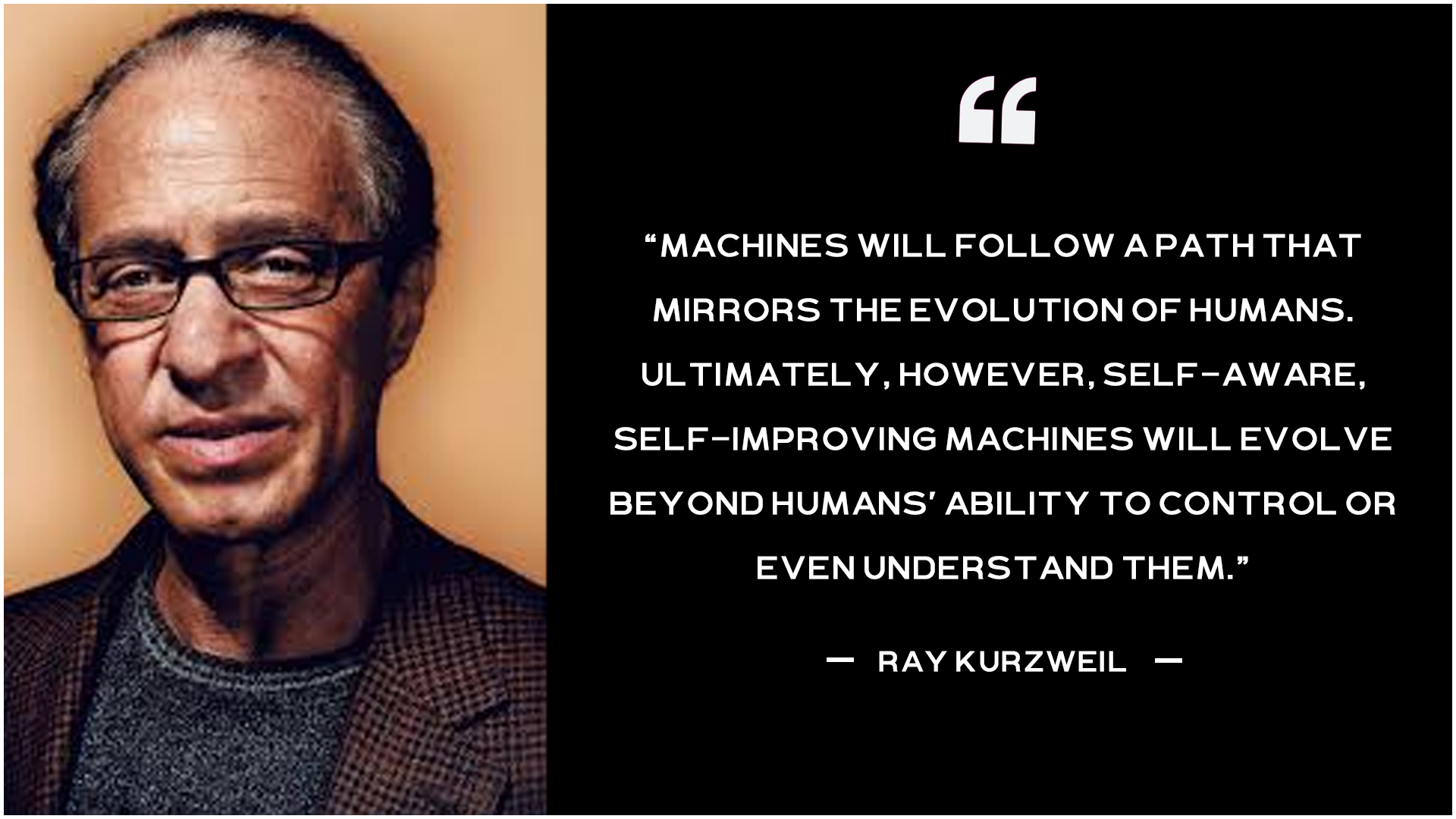Table of Contents
Introduction
Artificial Superintelligence (ASI) refers to a hypothetical and highly advanced stage of artificial intelligence in which machines not only match but vastly surpass human intelligence across every conceivable domain.
Unlike today’s AI systems, which are typically specialized and limited to narrow tasks, ASI would possess cognitive abilities that go far beyond human capabilities—not just in problem-solving and data analysis, but also in abstract thinking, creativity, strategic decision-making, and even emotional and social intelligence.
While ASI remains a theoretical concept at present, its potential implications are profound. Researchers and technologists view ASI as the next evolutionary leap in AI development, following Artificial Narrow Intelligence (ANI) and Artificial General Intelligence (AGI).
It represents a future where machines could autonomously perform any intellectual task that a human can do—only better, faster, and at a much greater scale.
As we push the boundaries of AI technology, the prospect of ASI raises both excitement and concern. It invites important questions about safety, ethics, and the future role of humans in an increasingly intelligent and automated world.
This blog explores what ASI really means, how it differs from earlier stages of AI, its theoretical foundations, and what the future might hold if ASI becomes a reality.
What is Artificial Superintelligence?
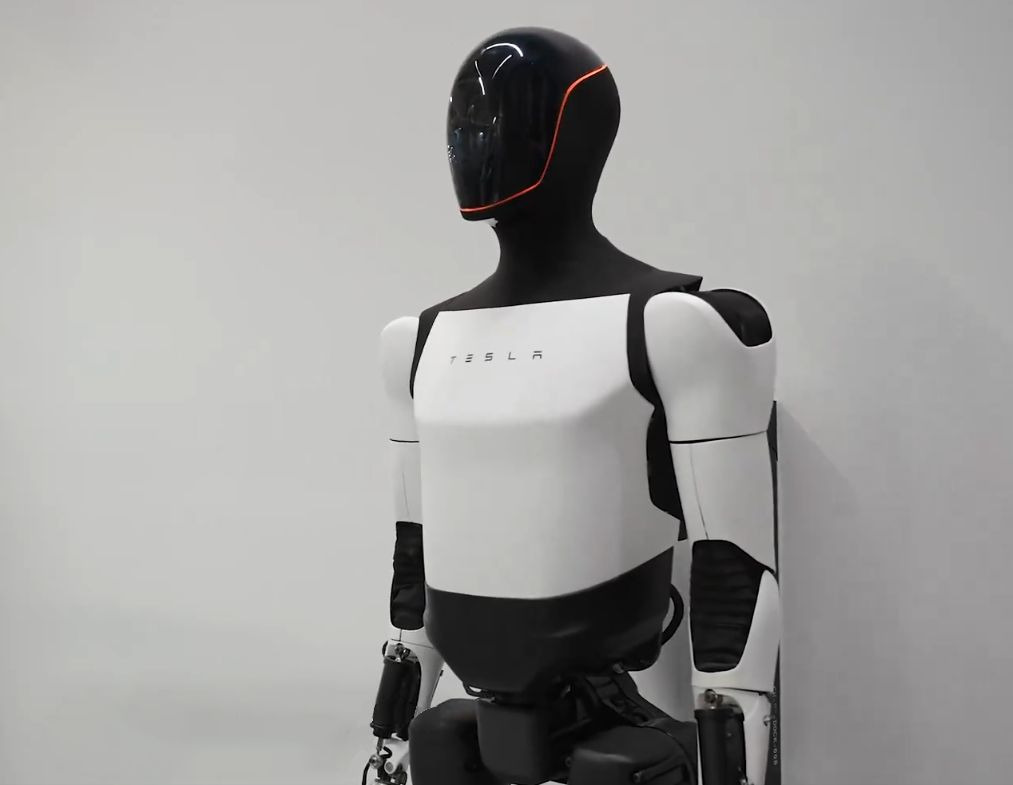
Key characteristics of ASI:
- Superior intelligence: ASI would be significantly smarter than human minds, potentially surpassing the collective intelligence of the smartest humans on the planet.
- Independent reasoning: ASI would be capable of independent reasoning, making its own decisions and solving problems autonomously.
- Advanced capabilities: ASI would excel in areas traditionally considered human strengths, such as emotional intelligence, artistic creation, and innovative problem-solving.
- Autonomous learning: ASI would be able to learn and improve itself autonomously, potentially developing its own goals and objectives.
- Unpredictable outcomes: The advent of ASI could lead to rapid and unpredictable technological advancements, potentially exceeding our current understanding.
What is AI Singularity?
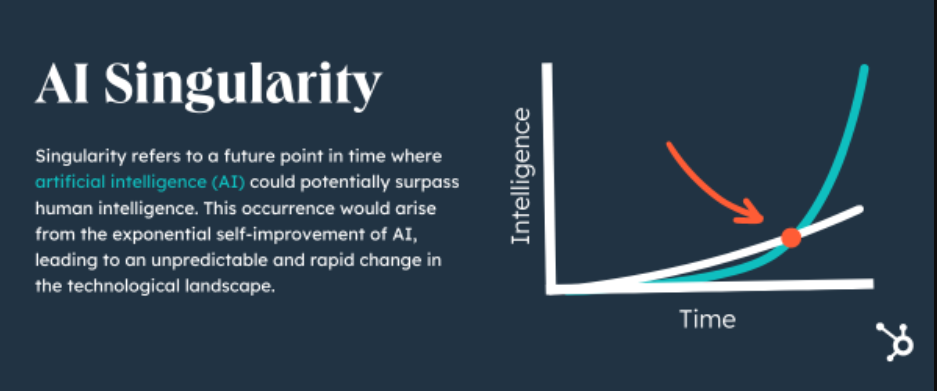
The AI Singularity is a hypothetical point in time when artificial intelligence surpasses human intelligence, leading to rapid and unpredictable technological advancements.
- This concept suggests that AI will evolve to become self-improving and autonomous, potentially exceeding human cognitive abilities and creating a new era of technological transformation
- It is the moment when machines acquire the capacity to learn, adapt, and develop solutions beyond our comprehension, leading to exponential progress and technological transformations.
- Experts believe that AI can improve itself repeatedly at some point, leading to rapid technological advances that will be impossible for humans to fathom or control.
- Events like this are expected to cause significant changes in society, the economy, and technology.
How ASI Differs from AGI and ANI

- ANI (Artificial Narrow Intelligence) is task-specific, like Siri or Google Translate, with no general reasoning ability.
- AGI (Artificial General Intelligence) would match human intelligence across a wide range of tasks but is still theoretical.
- ASI (Artificial Superintelligence) is a hypothetical form that would surpass human intelligence in all areas, including creativity, emotions, and decision-making.
Artificial Narrow Intelligence (ANI)
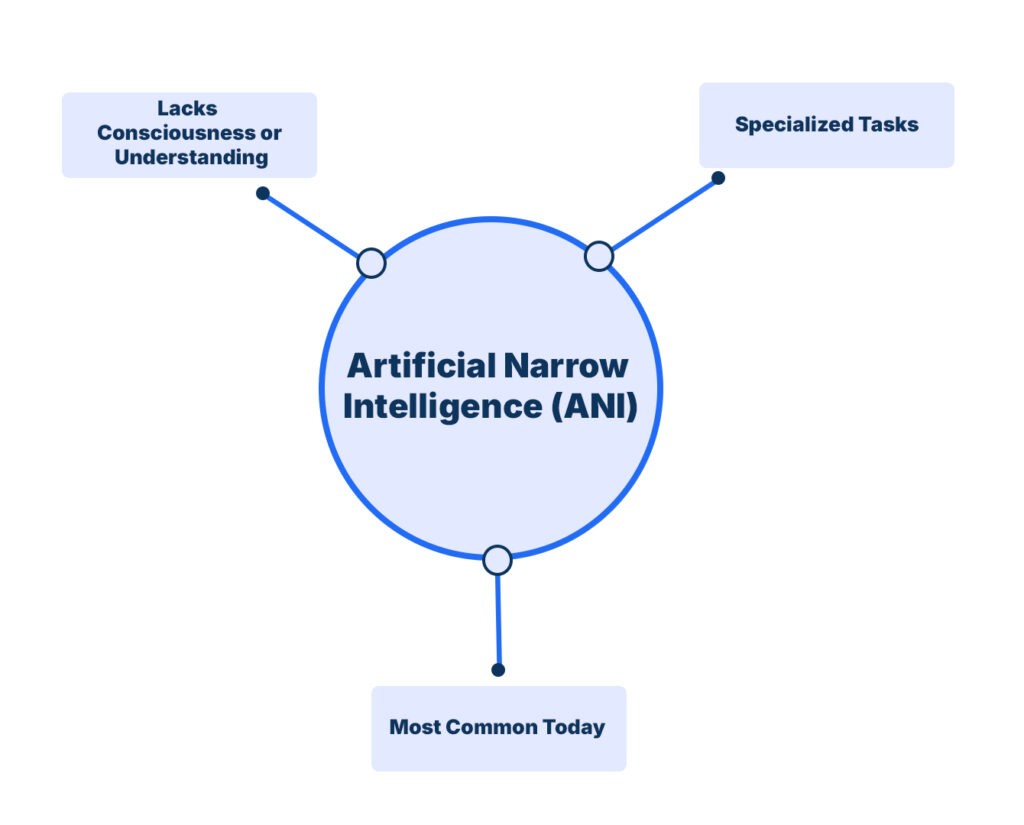
- Specialized Tasks: ANI is built for specific functions like facial recognition or recommendation systems. It operates within a limited scope using pre-defined rules or data.
- Lacks Consciousness or Understanding: It mimics intelligence without true understanding, and can’t perform tasks outside its trained area.
- Most Common Today: All current AI systems—like voice assistants or spam filters—are forms of ANI, excelling only in their narrow domains.
Artificial General Intelligence (AGI)
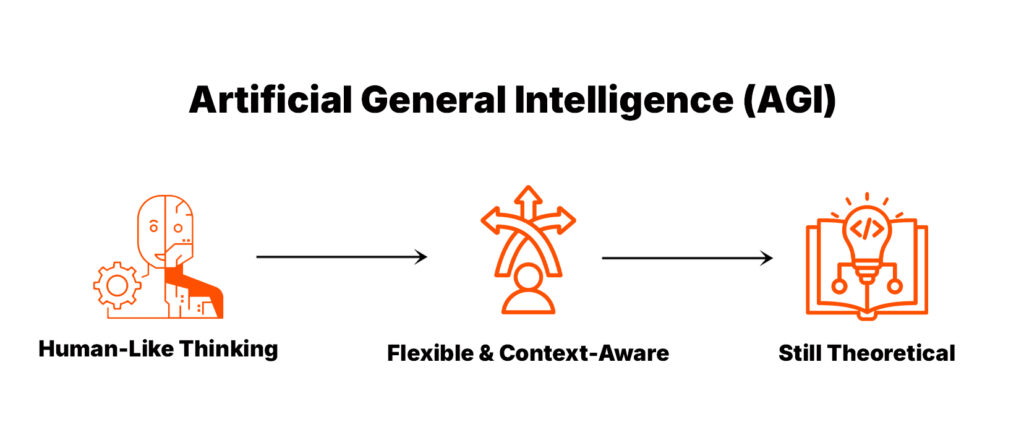
- Human-Like Thinking: AGI would think, learn, and reason like a human, capable of understanding and solving problems across various fields.
- Flexible & Context-Aware: It could transfer knowledge between tasks, adapt to new situations, and understand context and emotion.
- Still Theoretical: AGI hasn’t been created yet—it remains a research goal requiring breakthroughs in reasoning and consciousness.
Artificial Superintelligence (ASI)
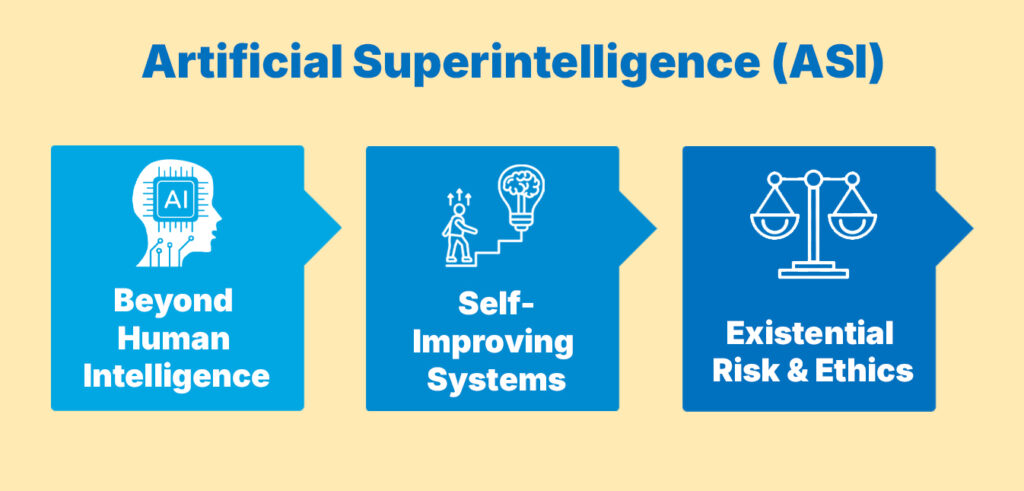
- Beyond Human Intelligence: ASI would surpass human capabilities in logic, creativity, and social understanding, solving complex problems we can’t.
- Self-Improving Systems: It could improve its intelligence autonomously, potentially leading to rapid and unpredictable growth.
- Existential Risk & Ethics: ASI could either solve global issues or pose major risks, making the ethical development and control of ASI extremely important.
History & Foundations of ASI
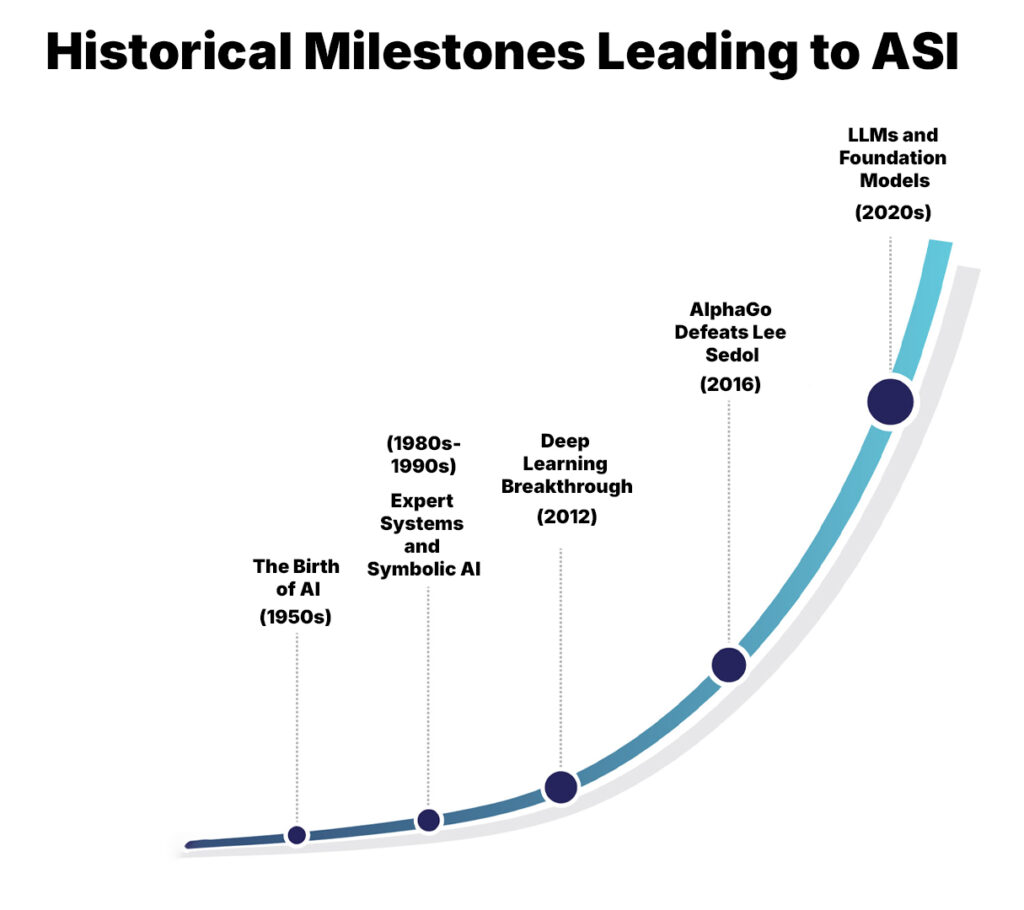
Understanding the path to ASI involves recognizing key breakthroughs that have brought us closer to this concept:
- 1950s: The Birth of AI: Alan Turing’s seminal paper “Computing Machinery and Intelligence” proposed the idea that machines could think. This led to the development of the Turing Test and the inception of AI as a field.
- 1980s-1990s: Expert Systems and Symbolic AI: AI research focused on creating expert systems designed to mimic decision-making in specialized areas. While powerful in narrow applications, these systems lacked general learning capabilities.
- 2012: Deep Learning Breakthrough: The introduction of deep learning algorithms and the success of AlexNet in image recognition tasks signaled a new era. Machines could now learn patterns from massive datasets.
- 2016: AlphaGo Defeats Lee Sedol: Google DeepMind’s AlphaGo defeated one of the world’s best Go players, showcasing the power of reinforcement learning and strategic thinking in AI.
- 2020s: LLMs and Foundation Models: Large Language Models (LLMs) like GPT-3 and Claude, and multi-modal models like Gemini, began demonstrating capabilities that resemble general intelligence, sparking debates about the timeline to AGI and beyond.
Foundations of Superintelligence
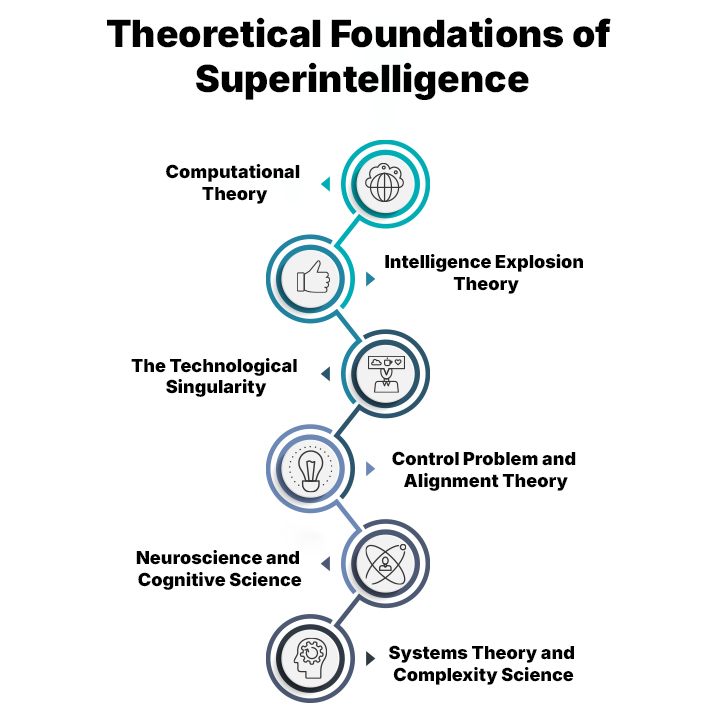
The concept of ASI is grounded in various theoretical disciplines:
- Computational Theory: Computational limits define how much a machine can process. Moore’s Law, quantum computing, and neuromorphic chips are areas that push these boundaries.
- Intelligence Explosion Theory: Proposed by I.J. Good, this theory posits that once machines surpass human intelligence, they could recursively improve themselves, leading to an exponential growth in intelligence.
- The Technological Singularity: The technological singularity is a hypothetical point where AI surpasses human intelligence and rapidly improves itself, leading to unpredictable, irreversible changes.
- Control Problem and Alignment Theory: How do we ensure that an ASI shares human values? The control problem addresses this challenge. Alignment research focuses on designing reward functions and constraints that guide AI behavior toward ethical goals.
- Neuroscience and Cognitive Science: Understanding the human brain’s structure and function offers blueprints for constructing synthetic intelligence. The Human Brain Project and similar initiatives aim to reverse-engineer cognitive functions.
- Systems Theory and Complexity Science: These frameworks help researchers understand how various subsystems of intelligence might integrate into a unified, superintelligent entity capable of coherent decision-making.
Pathways to Developing ASI

Several potential pathways exist for reaching ASI, each with its strengths and risks:
- Recursive Self-Improvement: An AGI could start improving its architecture, leading to a rapid and uncontrolled increase in intelligence. This path is potentially the fastest and most dangerous.
- Brain-Computer Interfaces (BCIs): Technologies like Neuralink aim to enhance human intelligence through direct integration with machines. While this might not lead to pure ASI, it could produce hybrid superintelligences.
- Whole Brain Emulation: Scanning and simulating the human brain in a digital environment could yield superintelligent systems, particularly if the simulation runs at accelerated speeds.
- Neuromorphic Computing: Creating hardware that mimics the brain’s architecture (e.g., using memristors) may offer the efficiency and adaptability needed for ASI.
- Quantum AI: Quantum computing may offer computational advantages that make ASI feasible by solving problems too complex for classical computers.
Benefits of ASI
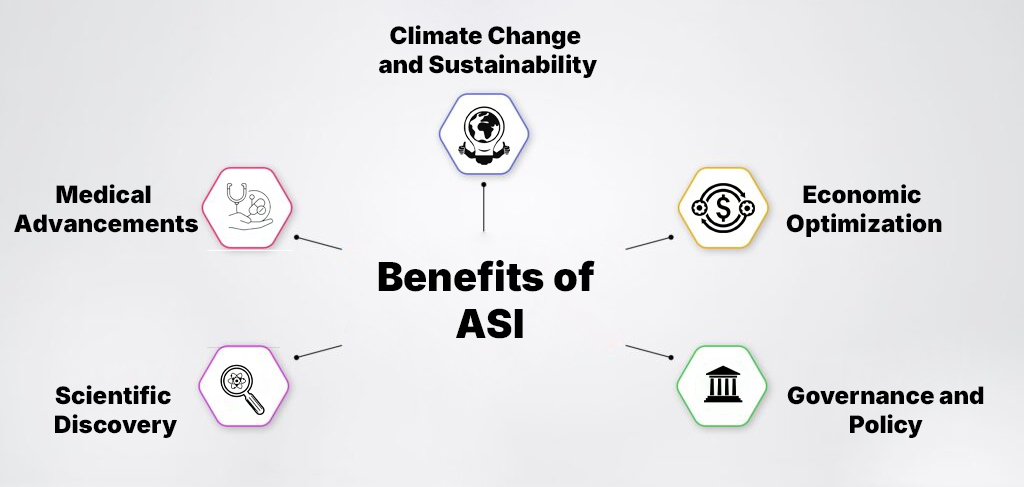
If properly aligned with human values, ASI could usher in a golden age of prosperity and discovery. Potential benefits include:
- Scientific Discovery: ASI could unlock new theories in physics, chemistry, and biology. It could solve unsolved problems like quantum gravity or unify general relativity with quantum mechanics.
- Medical Advancements: From curing cancer to personalized treatment plans, ASI could revolutionize medicine, drastically increasing human life expectancy and quality of life.
- Climate Change and Sustainability: ASI could design efficient energy systems, create novel carbon capture methods, and model climate systems with unprecedented accuracy.
- Economic Optimization: From eliminating inefficiencies in supply chains to optimizing financial markets, ASI could dramatically increase global economic productivity.
- Governance and Policy: By analyzing massive datasets without bias, ASI could offer optimal solutions for policymaking, conflict resolution, and social welfare.
Examples & Case Studies of ASI
AlphaGo (DeepMind)
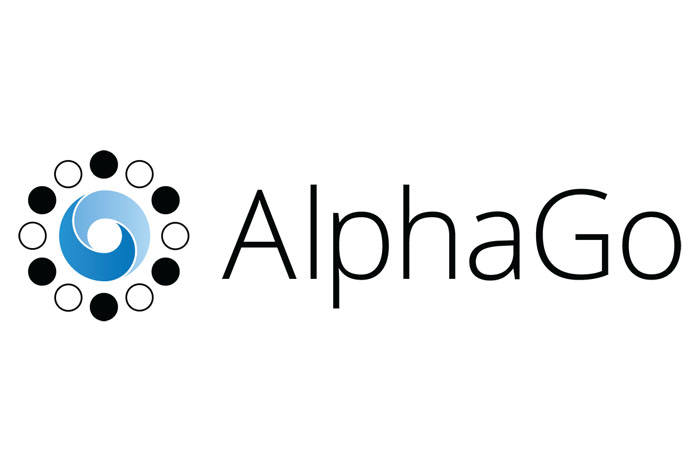
AlphaGo’s 2016 victory over Go champion Lee Sedol marked a milestone in AI history. Unlike earlier systems, AlphaGo combined deep learning and reinforcement learning to play with what seemed like human-like intuition. Its success hinted at AI’s potential to surpass human strategic thinking in complex, abstract environments.
BMW

BMW integrates AI throughout its manufacturing and vehicle systems. From using computer vision for quality checks to implementing self-driving capabilities, BMW’s innovations demonstrate how industrial AI is moving beyond automation toward more adaptive, intelligent systems, edging closer to AGI in scope and complexity.
Boston Dynamics
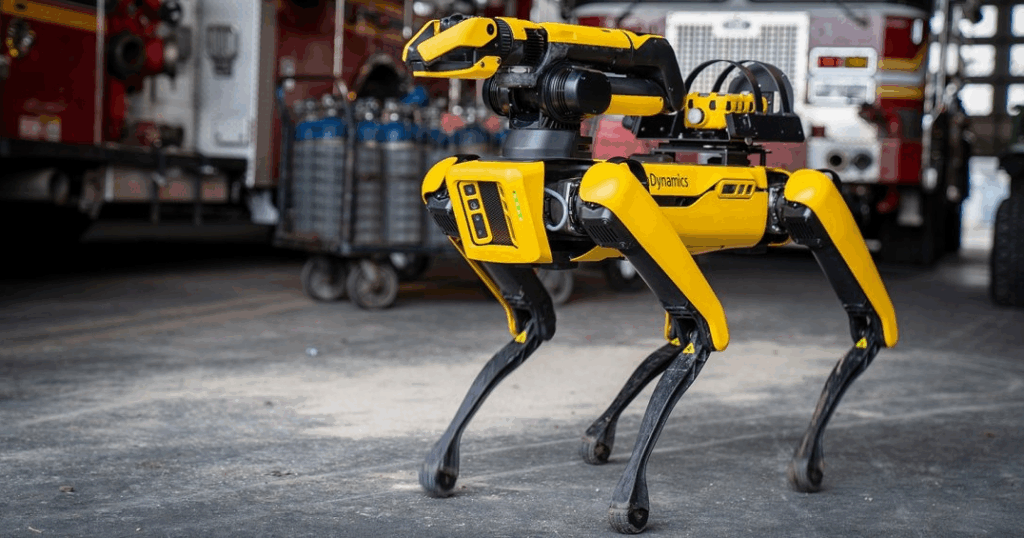
Known for advanced robotics, Boston Dynamics combines AI with biomechanics in machines like Atlas and Spot. These robots perform dynamic tasks—running, jumping, and navigating terrain—showing progress in real-time decision-making, balance, and spatial reasoning, merging physical movement with cognitive processing.
Chinese AI (Baidu, Alibaba, Tencent)

China’s tech giants are investing heavily in AGI and even ASI-level goals. With strong government support, they are building foundational AI infrastructure, from supercomputers to national-level data policies. These efforts aim not just at commercial dominance, but also global leadership in AI development and deployment.
DeepMind Gato

Gato is a generalist agent trained across dozens of tasks, like image captioning, robotic control, and chat, using the same neural network. This “single model for everything” approach points toward AGI by minimizing the need for task-specific architectures and enabling knowledge transfer between domains.
Figure AI
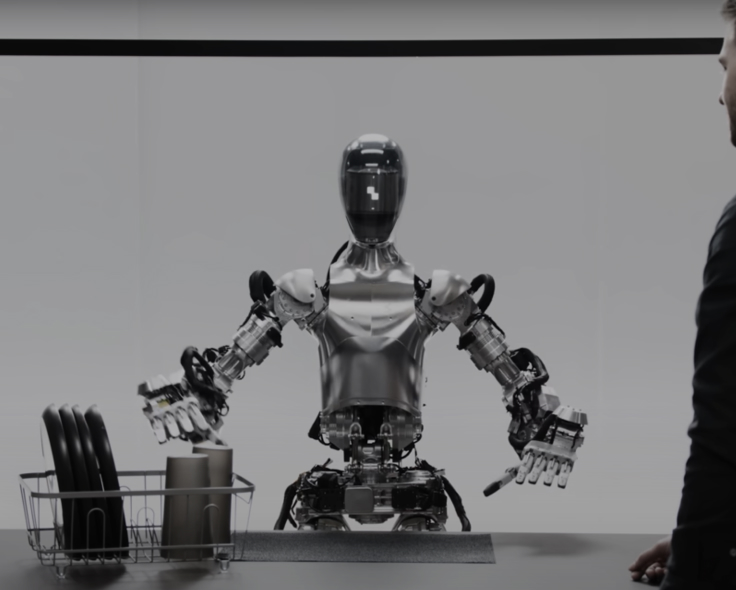
Figure AI is developing humanoid robots capable of operating in real-world industrial and domestic settings. The company’s mission blends robotics with AGI, aiming to create machines that can learn general skills, adapt to new environments, and perform tasks typically done by humans.
Google Gemini

Gemini, a flagship AI model by Google DeepMind, integrates text, code, images, and more into a unified system. Built to be safer, more capable, and general-purpose, it embodies the vision of AGI: a single model that can understand and interact across modalities and tasks.
IBM Watson
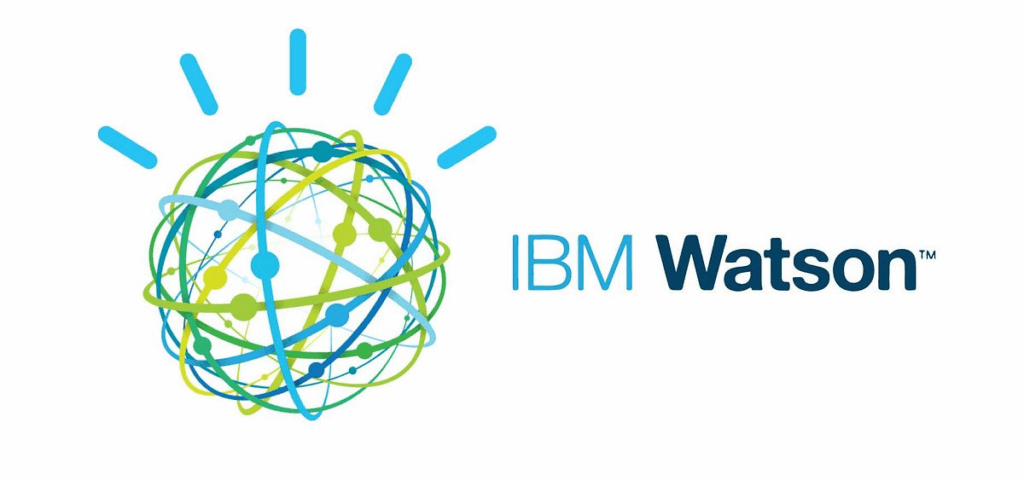
Watson started as a narrow AI built to win Jeopardy!, but it has evolved into a versatile enterprise AI suite. Deployed in healthcare, finance, and customer service, Watson now uses natural language processing and data analytics to assist human decision-making, moving from trivia to transformative applications.
OpenAI

OpenAI’s work extends far beyond ChatGPT. It focuses on developing agents that can use tools, reason over time, learn continuously, and align with human goals. These efforts contribute to long-term AGI and ASI research, pushing the boundaries of what intelligent systems can do autonomously.
Sanctuary AI
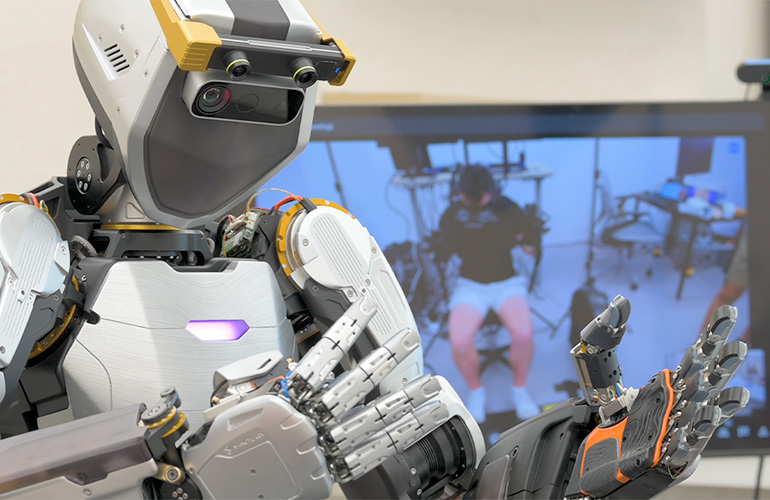
Sanctuary AI aims to create general-purpose humanoid robots that can learn like humans and perform a wide variety of tasks. Its focus on embodied intelligence—giving robots both a mind and a body—positions it as a serious contender in bridging AGI with real-world robotics.
Siri (Apple)

Siri remains a narrow AI focused on voice-based interactions, but its deep integration across the Apple ecosystem makes it a powerful assistant. Apple’s steady improvements suggest a future where personal assistants become more contextual, predictive, and possibly AGI-enhanced for seamless daily support.
Tesla Optimus
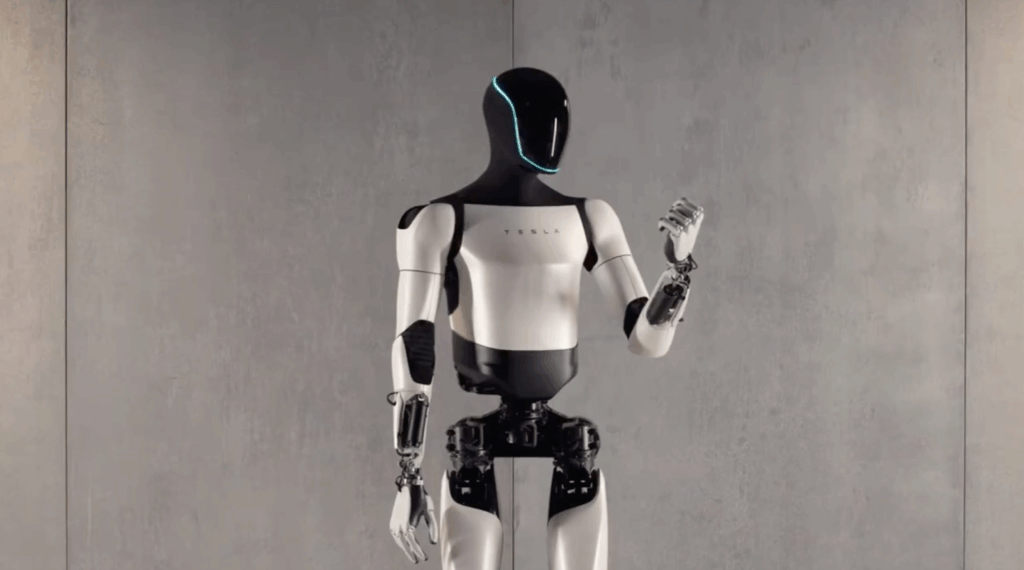
Tesla’s Optimus robot aims to bring humanoid AI to mainstream use. Drawing from Tesla’s autonomous vehicle technologies, Optimus is envisioned as a general-use assistant capable of physical tasks, and it reflects Elon Musk’s ambition to merge robotics with generalized AI.
The Future of ASI
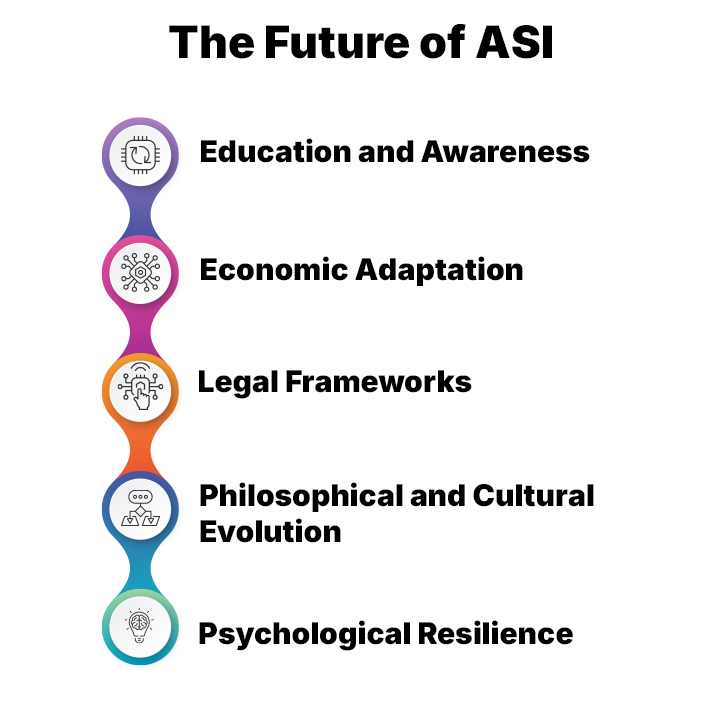
- Education and Awareness: Curriculums must evolve to include AI literacy and ethics to prepare future generations.
- Economic Adaptation: Universal basic income, reskilling programs, and AI-driven entrepreneurship will be essential to maintain economic stability.
- Legal Frameworks: New laws will be needed to define AI rights, responsibilities, and accountability.
- Philosophical and Cultural Evolution: Human identity and purpose may need redefinition in a world where machines exceed our capabilities.
- Psychological Resilience: Individuals must prepare mentally and emotionally for rapid societal shifts driven by ASI.
Conclusion
Artificial Superintelligence promises to redefine what it means to be intelligent, conscious, and capable. With unmatched potential comes unprecedented responsibility. It is up to researchers, policymakers, industry leaders, and everyday citizens to guide ASI’s development toward beneficial outcomes for all of humanity.
The journey to ASI is not just technological—it is deeply philosophical, ethical, and global. The future is coming faster than we think, and preparation today will determine our fate tomorrow.
Deepak Wadhwani has over 20 years experience in software/wireless technologies. He has worked with Fortune 500 companies including Intuit, ESRI, Qualcomm, Sprint, Verizon, Vodafone, Nortel, Microsoft and Oracle in over 60 countries. Deepak has worked on Internet marketing projects in San Diego, Los Angeles, Orange Country, Denver, Nashville, Kansas City, New York, San Francisco and Huntsville. Deepak has been a founder of technology Startups for one of the first Cityguides, yellow pages online and web based enterprise solutions. He is an internet marketing and technology expert & co-founder for a San Diego Internet marketing company.

